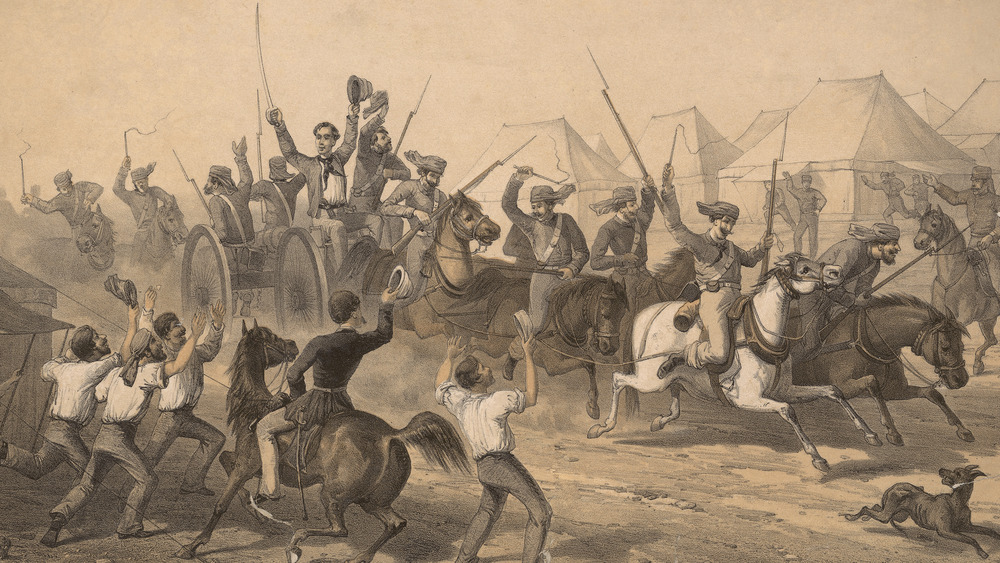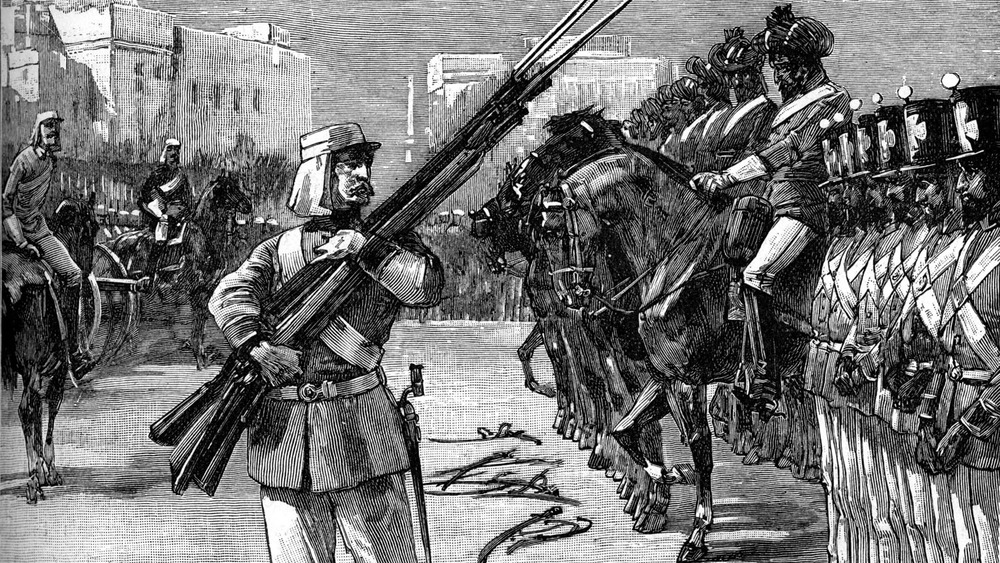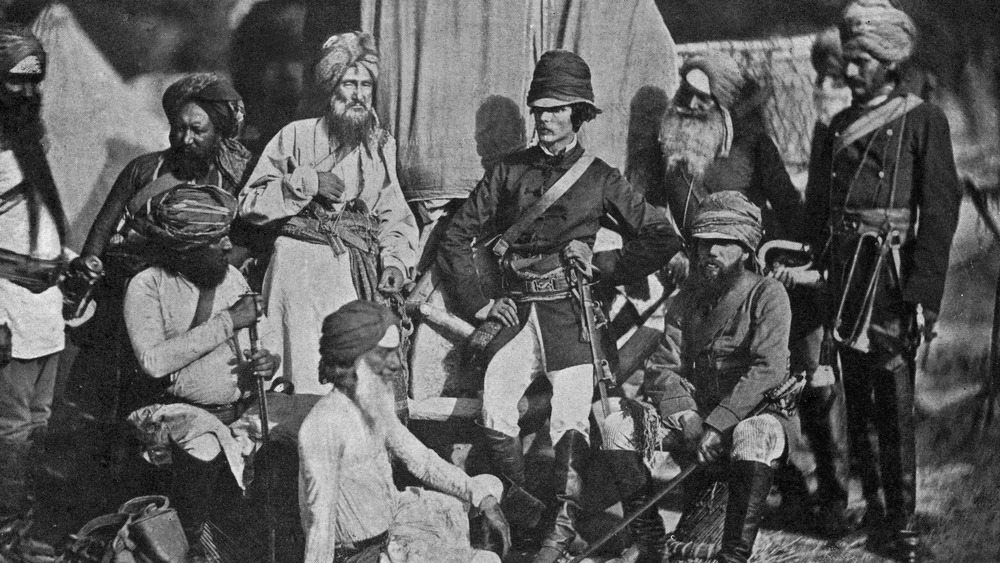The 1857 Mutiny That Shook Britain's Rule In India
The violent Indian uprising against their British rulers from 1857-59 goes by many names — the Sepoy Mutiny, the Indian Rebellion of 1857, First War of Independence, among others. In the West, the period is often described as "unreasonable and bloodthirsty uprisings spurred by falsehood about religious insensitivity," said ThoughtCo. "In India, it has been viewed differently," as one of the initial fights for freedom from the British. The insurrection failed, and the British punished the agitators aggressively — even tying them to a cannon and setting it off, demolishing the individual.
The East India Company began trading in India in the 1600s, and by the mid-1800s controlled most of the country. With the increase of their power came their recruitment of Indian soldiers, called sepoys, who patrolled the area and kept order. As Indians worried that the British might try converting their populace to Christianity, from the 1830s onward, tensions heightened between the two groups. Yet the sepoys remained loyal.
The British employed the "doctrine of lapse," a policy that allowed them to annex states in places without an heir for succession in the 1840s and 1850s, another policy that troubled locals.
"Another serious concern was the increasing pace of Westernization, by which Hindu society was being affected by the introduction of Western ideas," according to Britannica. "There was a widespread belief that the British aimed at breaking down the caste system. The introduction of Western methods of education was a direct challenge to orthodoxy, both Hindu and Muslim."
The first shots of a revolution
An additional factor contributing to the revolt involved the once-loyal sepoys. When a new Enfield rifle was introduced, rumors abounded about a grease used on the cartridge. Allegedly, the slick element came from pigs and cows, something that appalled both Muslims and Hindus, who did not want to open the cartridge with their teeth, as was commonly done, since those religions banned eating any part of those animals.
"Even though the cartridges were likely greased with linseed oil and beeswax, it didn't matter," according to The Great Courses Daily. "Hindu and Muslim soldiers interpreted this as a clandestine plot to convert India to Christianity, or at least to undermine their beliefs ... Many sipahis refused to load the new cartridges, leading to many being court-marshaled."
The first shots were fired at British officers on March 29, 1857, at Barrackpore military grounds, by Mangal Pandey of the Bengal Army. The British troops arrested him and he was hanged on April 8.
A movement is defeated
The British called future Indian troublemakers "pandies," after Pandey's attack. India, though, still honors him as a hero for independence. He has been featured in movies and his visage is remembered on a postage stamp.
The uprisings continued after the first ambush, especially in the north, where the Bengal Army revolts inspired violence, including massacres of British civilians in cities such as Delhi and Kanpur. The skirmishes were short-lived and stopped in 1858 as the British overpowered the provocateurs. "By the end, over 50,000 sepoys had died or were executed later, whether or not they were guilty of participating in the revolt," said Khan Academy. "Another 100,000 civilians were killed by British efforts to put down the rebellion and take revenge."
By the time the peace agreement was signed on July 8, 1859, Britain supplanted the East India Company and took control of India. The country remained a British colony for almost 100 years, until 1947.


